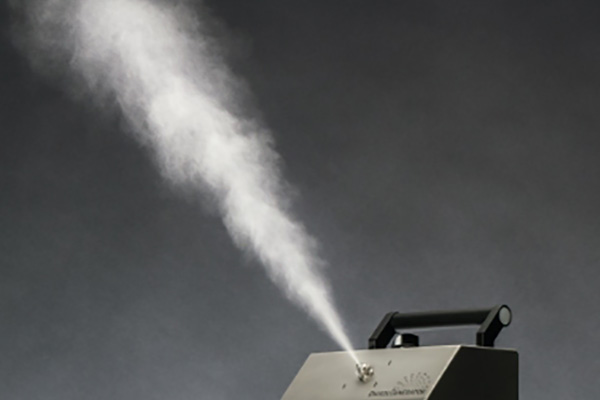Hydrogen peroxide is widely recognized for its powerful disinfecting properties, often used in households, healthcare settings, and various industries to kill bacteria, viruses, and fungi. Its effectiveness in eliminating a broad spectrum of pathogens has made it a popular choice for disinfection purposes. However, despite its widespread use, hydrogen peroxide disinfection has drawbacks. This article explores the disadvantages of hydrogen peroxide as a disinfectant, shedding light on the potential risks and limitations associated with its use.

1. Corrosive Properties
One of the primary disadvantages of hydrogen peroxide disinfection is its corrosive nature. At higher concentrations, hydrogen peroxide can cause damage to various materials, including metals, rubber, and certain plastics. This makes it unsuitable for disinfecting delicate or sensitive equipment, especially in medical and industrial settings where the integrity of instruments and surfaces is crucial. Over time, repeated exposure to hydrogen peroxide can lead to the degradation of materials, compromising their functionality and lifespan.
2. Potential for Skin and Eye Irritation
Hydrogen peroxide is a strong oxidizer, and contact with the skin or eyes can lead to irritation or even injury. While low concentrations (3% or less) are commonly used in household settings, higher concentrations (above 10%) are often employed in industrial and healthcare environments. These higher concentrations pose a greater risk of causing burns or other damage if they come into direct contact with the skin or eyes. Accidental splashes can lead to painful burns, and inhaling vapors may irritate the respiratory tract.
3. Limited Efficacy on Organic Matter
Hydrogen peroxide disinfection is less effective when organic matter is present. Organic materials, such as blood, tissue, or dirt, can neutralize the disinfectant properties of hydrogen peroxide, reducing its ability to kill pathogens. This limitation is particularly concerning in medical settings, where surfaces may be contaminated with bodily fluids or other organic substances. In such cases, thorough cleaning must precede disinfection to ensure the efficacy of hydrogen peroxide, adding an extra step to the disinfection process.
4. Instability and Storage Challenges
Hydrogen peroxide is an unstable compound that can decompose over time, especially when exposed to light, heat, or certain metals. This instability makes storage and handling a challenge, as the solution must be kept in a cool, dark place, usually in opaque or dark containers, to maintain its effectiveness. In some cases, stabilizers are added to hydrogen peroxide solutions to prolong their shelf life, but this can also complicate the storage and usage requirements.
5. Health and Safety Concerns
While hydrogen peroxide is generally considered safe when used properly, there are health and safety concerns associated with its use, particularly at higher concentrations. Inhaling hydrogen peroxide vapors can cause respiratory irritation, coughing, and shortness of breath. Ingesting the substance, even in small amounts, can lead to gastrointestinal irritation, nausea, and vomiting. In extreme cases, exposure to high concentrations of hydrogen peroxide can lead to more severe health issues, including respiratory distress and tissue damage.
6. Environmental Impact
Although hydrogen peroxide breaks down into water and oxygen, making it environmentally friendly in theory, its production and disposal can still have an environmental impact. The manufacturing process for hydrogen peroxide involves the use of energy and raw materials, contributing to the overall carbon footprint. Additionally, improper disposal of hydrogen peroxide, particularly in large quantities, can lead to environmental contamination, affecting water and soil quality.
7. Cost Considerations
Hydrogen peroxide disinfection can be cost-prohibitive, especially when high concentrations or large quantities are required. While it is relatively affordable for household use, the costs can add up in industrial or healthcare settings where regular and large-scale disinfection is necessary. Moreover, the need for additional safety measures, such as protective gear, specialized storage, and careful handling, can further increase the overall cost of using hydrogen peroxide as a disinfectant.
Conclusion
Hydrogen peroxide disinfection is a powerful and effective method for killing many pathogens. However, it is not without its disadvantages. The corrosive nature of hydrogen peroxide, its potential to cause skin and eye irritation, and its limited efficacy in the presence of organic matter are significant drawbacks that must be considered. Additionally, challenges related to its instability, health and safety risks, environmental impact, and cost can make hydrogen peroxide a less-than-ideal choice for certain applications.
While hydrogen peroxide remains a valuable tool in the arsenal of disinfectants, it is essential to weigh its benefits against its disadvantages and to use it with caution, particularly in settings where the risks may outweigh the rewards.